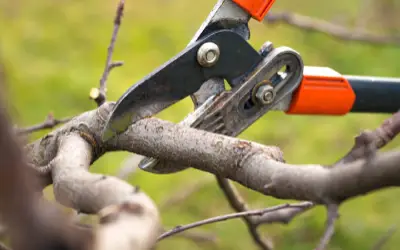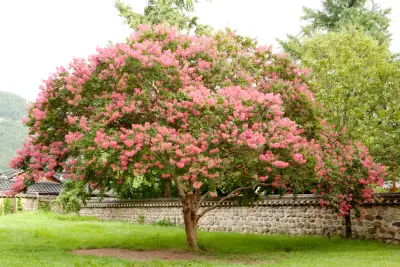
Pruning is one of the most vital parts of routine tree maintenance, an opportunity to remove branches that don’t benefit the overall structure of the tree. This allows your trees to stay healthy, grow strong, and live a long, beautiful life. But there’s more to it than just cutting off a few branches – you have to know which branches to cut, where to cut them, and yes, when to cut them.
Proper pruning is a science, and approaching it without the right knowledge can lead to more problems than benefits. In this article, we’re going to explore when the best time of year is to prune trees, including some specific trees commonly found on properties here in San Ramon and San Jose.
Is There a Best Time of Year to Prune Trees?
In general, the answer is yes. Think of pruning as surgery for your tree. As with any surgery, it’s important to plan it carefully so your trees have time to heal. During this recovery period, they will be more susceptible to diseases, pests, and other stress factors.
For most trees, the best time for significant pruning is during their dormant season in late winter to early spring (approximately January through March). However, that simple rule comes with a lot of nuance. The ideal timing truly depends on your specific goals for pruning it and the type of tree you have.
Leave your information below, and we’ll give you a call back as soon as possible!
Why You Should Usually Prune Trees in Late Winter to Early Spring
For the majority of deciduous trees that grace our San Ramon and San Jose landscapes, the dormant season is the prime time for a structural prune. Here’s why that timing works so well:
- Less Stress on the Tree: In winter, the tree is essentially asleep. It isn’t actively putting energy into growing leaves, flowers, or fruit. Pruning during this resting state is far less of a shock to its system compared to cutting it when it’s full of life and energy.
- Clear Visibility: Imagine trying to understand the architecture of a building while it’s covered in ivy. That’s what pruning a tree in full leaf is like. With the branches bare in winter, you can clearly see the entire “skeleton” of the tree. This allows for precise, intelligent cuts that improve its long-term structure and health.
- Faster Healing: By pruning just before the spring growth spurt, you’re setting the stage for rapid recovery. As soon as the weather warms, the tree directs its energy toward sealing the pruning wounds, effectively creating a natural bandage that protects it from pests and decay.
- Promotes Vigorous Growth: A proper dormant-season prune stimulates a robust burst of new, healthy growth as soon as spring arrives, leading to a fuller and more vibrant canopy.
Important Note About Pruning Oak Trees
If you have oak trees like Valley Oak or Coast Live Oak, DO NOT prune them in late winter to early spring – or anytime during the “wet season.” Doing so can be catastrophic for oak trees, as it can leave them vulnerable to pests and diseases, including Sudden Oak Death.
The best time to prune oak trees is during the dry part of the summer, approximately July to September.
Should You Ever Prune Trees During the Summer?
Yes, in certain instances. While heavy structural pruning is best left for winter, summer pruning (typically June to August) is an excellent tool for achieving specific goals.
- To Slow or Direct Growth: If you have a particularly vigorous tree that’s outgrowing its space, summer pruning can help. Removing leafy branches reduces the tree’s overall ability to photosynthesize, effectively tapping the brakes on its growth and helping to maintain a desired size or shape.
- To Improve Shape and Structure: Sometimes, a branch’s defect doesn’t become obvious until it’s under the full weight of its leaves. Summer is the perfect time to spot and remove awkward, weak, or rubbing branches that you might have missed in the winter.
- To Remove Dead or Hazardous Wood: Removing this deadwood is crucial for safety and can be done at any time of year, but it’s simplest to identify in the summer.
- Oak Trees: As we mentioned earlier, pruning an oak tree during the wet season can be harmful. Time your oak tree pruning for the driest part of the year – late summer.

What’s the Best Time of Year to Prune Flowering Trees?
For flowering trees, it’s all about preserving the magnificent floral display. If you prune at the wrong time, you might cut off the buds that would have become next year’s flowers.
Here’s a simple rule to follow:
- Spring-Flowering Trees: For trees that bloom in the spring, wait to prune them until right after their flowers have faded. This gives the plant an entire year to develop new buds for the next season’s show.
- Summer-Flowering Trees: For trees that bloom in the summer, such as a Crape Myrtle, prune them in the late winter or early spring. These plants produce their flowers on the new growth that emerges in the spring, so a winter prune encourages a flush of new wood and, consequently, more flowers.
Why Should You Avoid Tree Pruning in the Fall?
Here in San Ramon and San Jose, as the leaves begin to turn and the crisp autumn air arrives, many of us get the urge to clean up the yard. However, fall is generally the worst time of year to make major cuts.
There are two main reasons for this:
- Slow Healing: In the fall, a tree is preparing for dormancy, not actively healing. Pruning cuts made now will remain open and vulnerable throughout the wet winter, creating a perfect entry point for fungal diseases and pests.
- Stimulating Risky Growth: A sudden prune can trick the tree into producing a late-season burst of new, tender growth. This new growth won’t have time to harden off before the first frost, making it highly susceptible to winter damage.
Best Times to Prune Specific Types of Trees Common in the Bay Area
While there are general guidelines for when the best time to prune is, it can also be species-dependent. It’s crucial to know the specific needs of your trees. Here’s a quick reference for some of the trees common in the Bay Area:
- Japanese Maple: Prune very lightly in late winter (January-February) while the tree is dormant. Avoid heavy cuts, as these trees don’t heal as vigorously as others.
- Crape Myrtle: Prune in late winter before any new growth begins. These trees bloom on new wood, so winter pruning encourages abundant summer flowers.
- Fruit Trees: Prune in the late winter to shape the tree, remove dead or crossing branches, and encourage fruit production.
- California Sycamore: Prune during the dormant season in late winter to maintain structure and health.
- Deodar Cedar: These conifers require very little pruning. If needed, remove dead or broken branches in late winter before new growth starts. Avoid cutting back into old wood that has no needles.
Call Us for Professional Tree Pruning in San Ramon and San Jose
Tree pruning is one of the most important parts of keeping your trees healthy, but timing is everything. You can prune a tree with perfect technique, but if you prune it at the wrong time of year, it can still have major adverse effects on the tree. If you’re planning on doing the pruning yourself, make sure you have as much information as possible about proper techniques and the specific species you’re working on.
If you don’t want to risk it, we can help. Our professional tree pruners are experienced with all types of trees common here in the Bay Area, and we’ll make sure your tree pruning is done right—and done at the right time. All of our services are backed by an ISA-certified arborist on staff.
For more information or to schedule an assessment visit, give us a call today.
Back to Tree Pruning & Trimming